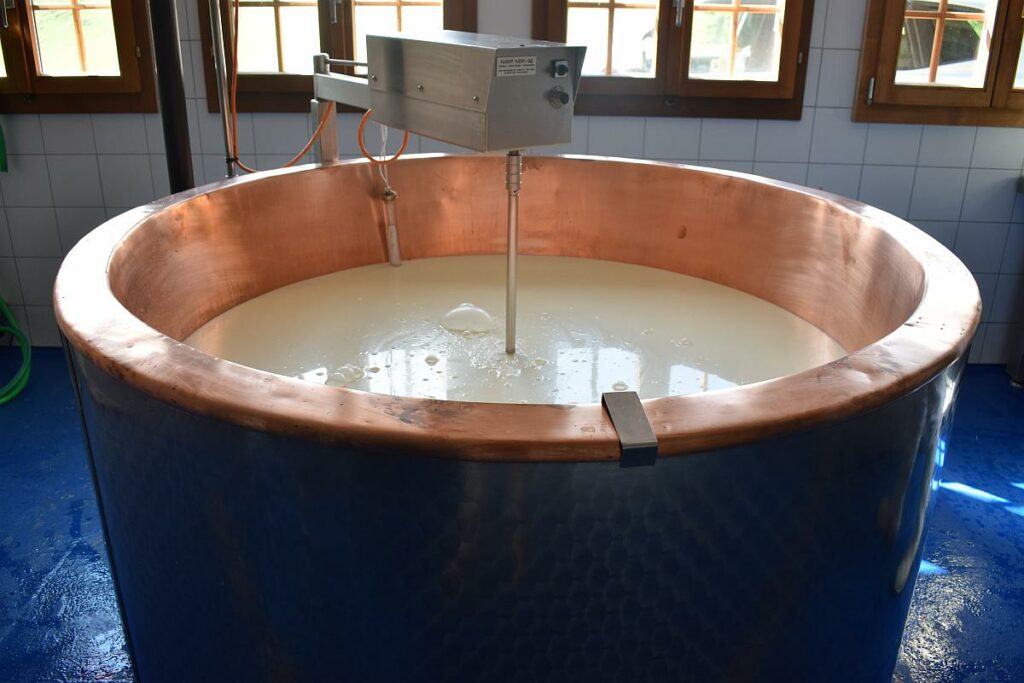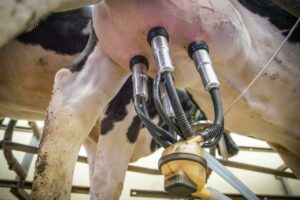Fernando Díaz
Whey is a coproduct of the cheese or casein manufacture used as an animal feed supplement. Despite its high energy density, its usage is limited in high production cows due to the low protein content in proportion to the salt and lactose content.
The lactose fraction in whey constitutes approximately 65% of the total dry solids while the protein fraction represents about 10% of the product. To overcome this issue, Pennsylvania researchers proposed a method in 1958 for ammonia buffering of whey while undergoing lactic acid fermentation. The method involved the fermentation of cheese whey with Lactobacillus bulgaricus, followed by subsequent treatment of the whey with anhydrous ammonia to neutralize the lactic acid formed during fermentation. Fermented ammoniated condensed whey (FACW) is rich in lactate, a gluconeogenic precursor.
A study conducted at the University of Wisconsin–Madison Dairy Cattle Instruction and Research Center examined the effects of feeding FACW to fresh Holstein cows on lactation performance and ketosis incidence. After calving, the researchers (Caputo Oliveira et al., 2019) fed multiparous cows for 45 days a diet including either 2.9% in a dry matter basis (DM) of a commercial liquid FACW (19 cows) or soybean meal (20 cows). The FACW product contained 72.7% lactic acid and 55.5% protein, largely in the form of the nonprotein nitrogen associated with ammonium lactate, and its pH was 6.5. Protein, starch and fat level concentrations in the fresh diets were 17.0, 26.5, and 4.3% DM, respectively.

Blood metabolites [β-hydroxybutyrate, glucose, insulin, and nonesterified fatty acid (NEFA)] were evaluated in samples collected at 3, 5, 7, 9, 11, 14, 17, 21, 28 and 45 days after calving. The results were published in Journal of Science and these were the main findings:
- Average DM intake during the trial period was not affected by diets (21.7 kg/day); however, cows receiving the FACW diet tended to eat less from week 3 to week 7 postpartum compared with cows fed the soybean meal diet.
- There was no treatment difference in production performance between diets. Average milk yield and milk composition were 42.8 kg/day with 4.98% fat and 2.87% protein. Interestingly, milk urea nitrogen level was similar in both treatments (13.5 mg/dL).
- Feeding FACW did not affect body weight and body condition score change with cows losing on average 68.2 kg and 0.35 units, respectively, from calving to 45 days in milk.
- However, FACW supplementation did shift blood metabolites. Cows fed FACW had lower β-hydroxybutyrate and NEFA concentrations and higher glucose and insulin levels in the immediate postpartum period (3 to 7 days in milk).
- As a result of differences found in the metabolite profile, the incidence of subclinical ketosis, defined as β-hydroxybutyrate concentrations greater or equal to 1.2 mM, was significantly lower in cows supplemented with FACW (36.8%) than in unsupplemented cows (60.0%). All cases of ketosis developed during the first 17 days in milk, and only 1 cow (5%) in each treatment group suffered from clinical ketosis, defined as β-hydroxybutyrate ≥3.0 mM.
In conclusion, altogether, these results demonstrate feeding fermented ammoniated condensed whey during the fresh period reduces the incidence of subclinical ketosis. The supplementation does not, however, seem to have an impact on production performance or body reserve mobilization.
References
- Arnott, D. R., Stuart Patton, and E. M. Kesler. 1958. A method for manufacturing a high-nitrogen low-lactose product from whey. Journal of Dairy Science 41:931-941.
- Caputo Oliveira, R, K. J. Sailer, H. T. Holdorf, C. R. Seely, R. S. Pralle, M. B. Hall, N. M. Bello, and H. M. White. 2019. Postpartum supplementation of fermented ammoniated condensed whey improved feed efficiency and plasma metabolite profile. J. Dairy Sci. 102:2283–2297.









